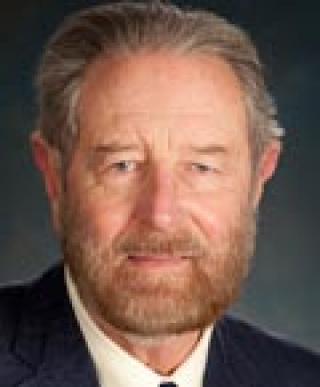
Senior professors are honored for their exceptional scholarly accomplishments and younger faculty members for their demonstrated scholarly potential.

Timothy E. Gregory
Professor, Department of History
The late Roman and Byzantine world, long regarded as a “dark age” and all but ignored by scholars, has been illuminated through the work of Timothy Gregory. An internationally respected historian and archaeologist of the Eastern Mediterranean, Gregory’s work focuses on the period between antiquity and the modern era, when the great modern western religious and politico-economic systems emerged and the foundations for modernity were laid.
Gregory, widely recognized as a “founder” of Byzantine archaeology in Greece, is among a handful of American scholars who direct active excavation projects there. He led a major, long-term excavation at the sanctuary of Poseidon at Isthmia in central Greece, site of the Isthmian Games – one of the four great “crown games” of Greek antiquity. He is the director of the American School of Classical Studies in Athens, the largest archaeological research center in the country. Closer to home, he established the Museum of Classical Archaeology at The Ohio State University.
According to one colleague, “Tim has an outstanding reputation and is held in the highest esteem among his archaeological colleagues in both Europe and the U.S. for his excellent fieldwork over many years in Greece. The impact of his work goes well beyond the regions in which he has carried out most of his work.”
Gregory has authored four major monographs, 53 single-authored papers and articles and numerous collaborative papers. His work has been supported by fellowships and grants from the National Endowment for the Humanities, the U.S. Department of Education and the Packard Humanities Institute.
Gregory received his AB, AM and PhD from the University of Michigan. He began his career at Ohio State in 1972.
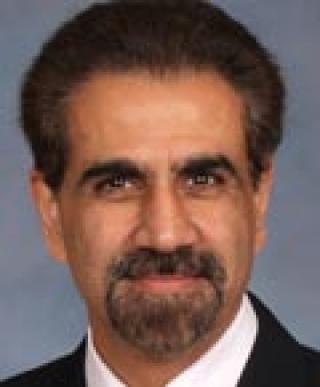
Parwinder S. Grewal
Professor, Department of Entomology
Through the use of entomopathogenic nematodes, or roundworms, Parwinder Grewal has made important contributions to the mitigation of insect pests in both agricultural and urban settings.
His work, which provides safe, effective “green” methods for controlling insect pests, spans several organizational levels – from the subcellular to the ecosystem. Nematodes are extraordinarily lethal to many insect pests yet are safe for plants and animals. Their sensitivity to environmental extremes such as heat and ultraviolet radiation has limited widespread use. Grewal is exploring the factors limiting their success in various commodities/crops to identify optimal environmental, cultural and management conditions that will favor their performance.
Grewal, an internationally known leader in urban entomology, created the interdisciplinary Urban Landscape Ecology program – a program that brings together scientists from a wide range of disciplines to address challenges facing landscapes and ecosystems in urban areas. He is also director of the Center for Urban Environment and Economic Development, responsible for the development and commercialization of environmentally compatible methods for controlling pests.
“Dr. Grewal is the leader of the first complete genome sequencing project of an entomopathogenic nematode,” said one colleague. “The sequencing project will not only lead to numerous new avenues to expand the biocontrol utility, but will also provide considerable insight into basic pathogen-host relationships.”
Grewal’s research has resulted in seven invention disclosures and three patents. He is the author of the most cited paper in the field of entomopathogenic nematology and has published 133 peer-reviewed papers. Grewal is also past president of the Society of Nematologists.
Grewal received his BS and MS from Punjab Agricultural University, and his PhD from the University of London. He started his career at Ohio State in 1997.
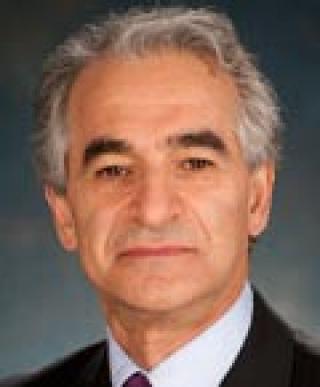
Mohammad Samimy
The Howard D. Winbigler Designated Professor, College of Engineering
Turbulence remains an unconquered scientific and engineering frontier. For the past 25 years, Mohammad (Mo) Samimy has carried out pioneering research to develop and use advanced laser-based flow diagnostics to better understand the nature of turbulence and to follow-up with the development of advanced actuators and control techniques to tame turbulence in practical engineering applications. His groundbreaking research led to the development of advanced plasma-based actuators and control techniques that mitigate noise in both commercial and tactical aircraft.
According to one colleague, “Professor Samimy has the reputation of being one of the foremost experimental fluid dynamicists in the United States, especially in high-speed flows. These involve difficult facilities to build and maintain in an academic environment as well as difficult measurements using modern diagnostic tools. His experiments are seminal in elucidating the effect of compressibility on turbulent shear flows and mixing characteristics of high-speed shear flows with application to the supersonic combustion phenomenon.”
Samimy’s work has been strongly supported by industry, the Department of Defense, the National Aeronautical and Space Administration, the National Science Foundation and the Department of Energy, to name a few. His work has resulted in two US patents, a European patent and over 85 journal articles. He is a fellow of the American Institute of Aeronautics and Astronautics, the American Physical Society and the American Association for the Advancement of Science.
Samimy received his BS from Sharif University of Technology in Tehran, Iran, and his MS and PhD from the University of Illinois at Urbana-Champaign. He began his career at Ohio State in 1985.
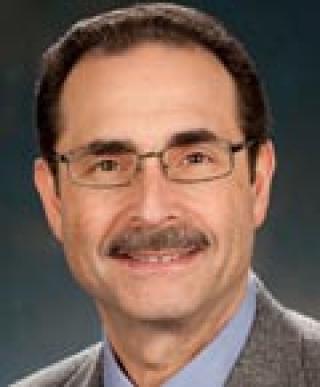
Larry S. Schlesinger
The Samuel Saslaw Professor in Infectious Diseases
Larry Schlesinger has advanced our understanding of how diseases such as tuberculosis impact human health by providing dramatic insight into the interaction of microbes with host cells. He is an accomplished physician-scientist and educator who has made major contributions to the field of mycobacterial pathogenesis and lung innate immunity. He has coupled his national and international reputation in research/education with a proven track record of building successful, impactful programs at Ohio State.
“Dr. Schlesinger is among the national and international leaders in microbial pathogenesis of intracellular bacteria of macrophages. His efforts and vision over the last eight years have resulted in the establishment of Ohio State as a rising star in infectious disease and immunology research, where prior to his arrival it had little standing,” said a colleague.
The quality and importance of Schlesinger’s research are evidenced by the nearly 100 peer-reviewed publications in high-impact and top-tier journals. He was awarded the prestigious Interscience Conference on Antimocrobial Agents and Chemotherapy (ICAAC) Young Investigator Award early in his career and was elected as a Fellow of the American Association for the Advancement of Science in 2008.
He has been continuously funded at the national level for the past 20 years by agencies including the National Institutes of Health, the Department of Veterans Affairs, the Centers for Disease Control and Prevention, and the Department of Defense. His current total grant portfolio is nearly $6 million.
Schlesinger received his BA from Cornell University and his MD from Rutgers Medical School. He began his career at Ohio State in 2002.
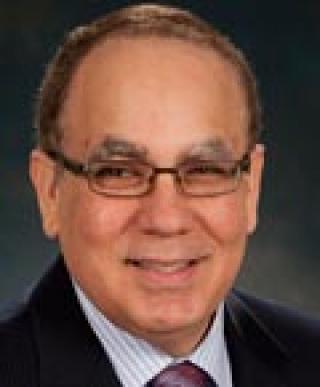
Peter M. Shane
Professor, College of Law
Jacob E. Davis and Jacob E. Davis II Chair in Law
A public law scholar of national and international repute, Peter Shane stands at the top of two different fields within public law and policy – the separation of powers, which sets the President against Congress and the courts, and the role of media and digital technology in sustaining democracy. In both arenas, Shane continues to make contributions that shape debate in the halls of government and in the public.
Shane’s research on law, communication and democracy led to his 2008 appointment as executive director of the Knight Commission on the Information Needs of Communities in a Democracy. The Commission’s final report, of which Shane was lead author, is expected to be highly influential in shaping the direction of scholarship and policy.
According to one colleague, “Professor Shane is one of the top five (perhaps even the top three) legal academics in the country who have shaped current thinking on separation of powers and government structure. Moreover, in the best tradition of a research university, he is actively engaged in applying the results of his work in important ways to improve public programs and processes.”
Shane holds the Jacob E. Davis and Jacob E. Davis II Chair in Law. In 2004, he founded I/S: A Journal of Law and Policy for the Information Society, a peer-reviewed journal of scholarship on law and policy issues related to new information and communication technologies. His work has resulted in six books, 48 journal articles and book chapters, 41 law review articles and more than 725 citations.
Shane received his AB from Harvard College and his JD from Yale Law School. He began his career at Ohio State in 2003.
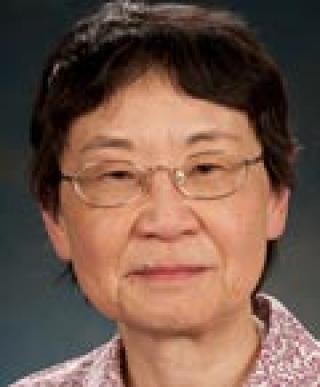
Junko Shigemitsu
Professor, Department of Physics
One of the most important and challenging problems in theoretical physics is understanding the strong force – one of the three fundamental forces in the standard model of particle physics. Junko Shigemitsu is a world leader in lattice gauge theory or lattice quantum chromodynamics (QCD), a method for calculating the properties of subatomic particles from first principles using supercomputers. She has played a central role in the development of lattice QCD into a practical tool that gives new insights into the fundamental properties of matter.
Shigemitsu is the co-founder and co-leader of the HPQCD Collaboration, one of the most successful lattice QCD groups in the world. The HPQCD Collaboration was the first group to show that many known properties of subatomic particles could be calculated to within a few percent errors. Their recent results have been crucial for interpreting new measurements from high-energy physics experiments.
According to one colleague, “Junko’s contributions to elementary particle physics through her incisive breakthrough lattice QCD calculations are first rate. They hold the promise to reveal a world of new phenomena.” Another colleague said, “The work is not only important, but also intellectually and technically impressive. It pushes the frontier of modern computer technology, and has had spin-off effects feeding back into that field.”
Shigemitsu was named a Fellow of the American Physical Society in 2000. She has published 79 papers in top-tier physics journals and her papers have accumulated more than 4,000 citations. In addition, she has been funded continuously by the Department of Energy since 1982.
Shigemitsu received her BS from Sophia University in Japan and her PhD from Cornell University. She began her career at Ohio State in 1982.


